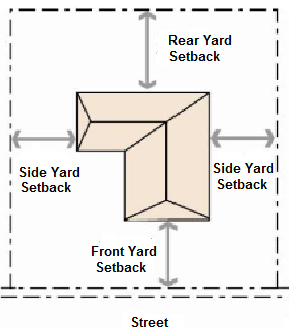§ 4.2.26. Industrial Complex (I-C) classification.
A.
Intent of classification. The Industrial Complex classification is intended to provide for the development of integrated wholesale and special retail businesses which require office, research and development, manufacturing, repair, service, sales, warehouse storage and distribution facilities. These businesses may require larger parcels for the outside storage of materials or equipment in inventory or awaiting repair.
B.
Permitted uses:
Agricultural chemical, fertilizer sales, including application companies
Agricultural uses as an interim use, excluding livestock
Automobile, truck or trailer rental
Automobile used parts, retail and wholesale
Awning, canvas, repair
Bakery, industrial, commercial
Bank, credit union, financial and loan
Blue printing, photo-stating, photo engraving, printing, publishing, and bookbindery
Carpet, rug, and upholstery cleaning
Construction or industrial equipment, including sales, leasing, repair, retail, and wholesale
Convenience store, gas station
Daycare, child, adult
Distribution and warehousing facility
Dry cleaning plant
Feed and fertilizer, retail and wholesale
Fitness centers, gymnasiums
Freight terminal
Gas, bottled
General construction industries relating to the building industry, such as general contractors, electrical contractors, plumbing contractors, equipment rental yards, etc.
Heliport
Hotel or motel
Ice storage facility
Laundry, commercial plant
Mail and parcel delivery, private
Motor freight or truck terminal
Musical instruments, manufacture, or assembly
Newspaper printing plant
Parking of commercial vehicles
Pest control agency, supplies
Printing, photoengraving, publishing, and bookbinding
Professional office
Restaurants
Restaurant equipment sales
Shops performing custom work such as, air conditioning, cabinet, carpentry, computers including software, concrete, electrical, heating, grinding, irrigation, metals, painting, pipes, plumbing, pumps, septic tanks, sheet metal, sharpening, swimming pools, ventilating, welding, tire recapping, varnishing, vulcanizing including maintenance, repair
Storage, mini-warehouses
C.
Special Uses (requiring permits):
Airport, general aviation
Airport, private
Garbage transfer station
Gas meter facility and supply lines, high-pressure, except where such permits are pre-empted by state or federal regulations
Optical goods, manufacture, or assembly
Sawmill
Sewage treatment plants with an inflow exceeding 5,000 gallons per day
Sprayfields or other type of effluent disposal area when application rate exceeds 5,000 gallons per day, if allowed by law
Water wellfields
D.
Development Standards:

Maximum Density Permitted: 1 Security Dwelling Unit
Minimum Lot Area: 40 acres (Smaller parcels by SUP)
Minimum Lot Width: 150 feet
Maximum Building Height: 50 feet
Maximum Floor Area: 0.75
E.
Setbacks:
Minimum Front Setback: 40 feet
Minimum Side Setback: 10 feet
Minimum Rear Setback: 10 feet
Accessory Structures: gas pumps or islands require a 25 feet setback; gas pump canopies may protrude 10 feet into a required setback.
F.
Special Requirements:
(1)
All setbacks shall be measured from the outside wall of buildings or structures and from the concrete curb surrounding gas pumps; however, eaves, roof overhangs, or pilasters may protrude two feet into a required setback.
(2)
Areas used for parking of commercial vehicles, or storage of vehicles, or outdoor storage shall be screened, buffered or fenced to screen said areas from view from access streets, freeways and incompatible adjacent properties. Such screening shall form a complete opaque screen up to a point eight feet in vertical height.
(3)
Phased developments are allowed. Consideration shall be given to transportation facilities (rail and highway) traffic circulation, parking, utility needs, aesthetics, and compatibility.
G.
Buffering Requirements: The table below is a modified version of Table 6.8-2 of the Land Development Code and provides the type of buffer required between a proposed use and an existing use, or in the absence of an existing use. Refer to Section 6.8.6 for additional requirements.
Land Use Buffer
Requirements
Existing or Permitted Land Use AG SFR MF COM IND PUB ROW Proposed
Use
COM D B B - E C C PUB E B C C C - C IND B B B B - B C/D* AG - - - - - - - *D Type Buffer if residential adjacent to ROW
Screening/Landscape Buffer Requirements for every 100 Lineal Feet
Buffer
Type
Required Width Number of Trees Shrubs & Ground Coverage Wall Required Additional Requirement/Notes B
20' 2 shade/3
understory50% yes C
15' 2 shade/3
understory50% no Shrubs and groundcover excludes turfgrass and must have a min. height of 3 ft. within 1 yr. of planting
D
15' 2 shade/3
understory25% yes E
5' 4 shade trees shrubs only no Shrubs shall be planted in a double-staggered row and reach a maintained height of 6 ft. in 3 yrs.
(Ord. No. 17-08, § 2(Exh. A), 4-11-2017)

